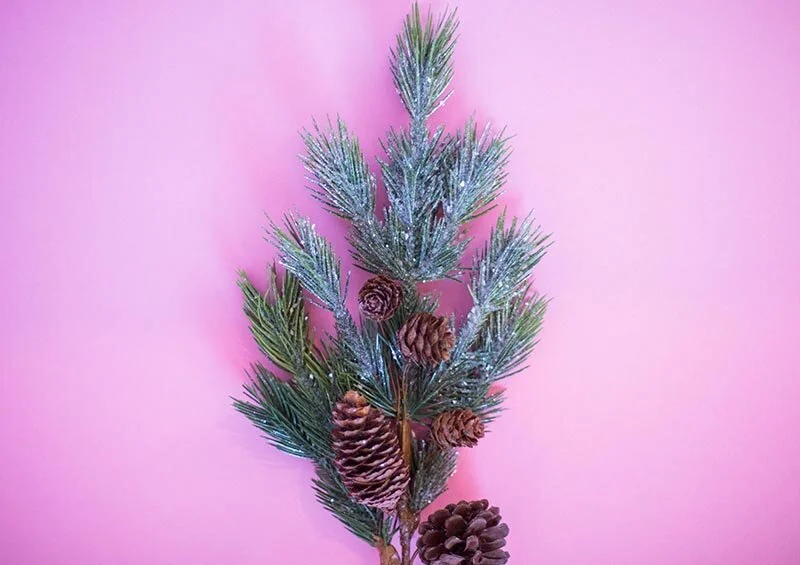The Weird Similarities Between Santa Claus & Magic Mushrooms
Hallucinogenic fungi might be responsible for a lot of Father Christmas’ traits, including his outfit, flying reindeer, and gift-giving habits.
By Allyson Larcom
Hear us out: This is not as far-fetched an idea as it sounds. (Art: Trav)
‘Tis the season for holiday cheer. All around the world, families who celebrate Christmas have put up their lights, decorated their trees, and hung their stockings over their fireplaces.
Myriad children are eagerly anticipating the gifts they’ll receive from jolly St. Nick. And while some kids might question where these gifts are coming from (the elves’ toy factory in the North Pole, duh), few are likely to delve much deeper into the legendary man’s past.
This is probably for the best because Santa Claus, it turns out, might be a little less innocent than you think.
Though most people believe his origin was Clement Clarke Moore’s 1822 poem, “A Visit From Saint Nicholas” — better known to modern-day audiences as “‘Twas the Night Before Christmas” — some historians and anthropologists have another theory.
They believe that the bearded gift-giver’s existence might be the result of something else. They believe that Santa came from magical mushrooms.
The Santa-mushroom connection
Known as Amanita muscaria or the fly agaric, the mushroom in question is a species of fungus found in the Northern hemisphere, in places such as Siberia, Scandinavia, and Canada. It typically grows in cold, forested regions amongst the roots of pine, spruce, fir, birch, and cedar trees.
A. muscaria is the kind of adorable ‘shroom you’re most likely to see illustrated in a fairy tale: bright red with white polka-dots. It’s potentially toxic when eaten raw, but if ingested in small enough doses or prepared properly, it can be used as a strong hallucinogenic drug. One mushroom cap is usually enough to get an adult good and high, and they could be fatal if you overdose.
Ancient artifacts found in Scandinavia and Siberia featured these white-spotted red toadstools — and it’s not hard to find ornaments and other holiday knick-knacks modeled after them in stores today.
The fly agaric’s unique coloring is believed to have influenced Santa’s traditional red-and-white outfit. Some researchers even think that Santa Claus originated as a “happy personification” of the mushrooms.
Others have pointed out his uncanny similarities to a particular type of shaman from the Arctic who would consume the fungi to receive visions and perform healing rituals.
Another aspect of the myth attributed to the fly agaric is Santa’s flying reindeer. Some scholars suspect that this part of the story comes from people tripping out on mushrooms and telling others that they saw flying reindeer.
Perhaps early Christmas celebrants who had taken these mushrooms perceived the reindeer they saw to be flying simply because they were intoxicated, they argue. Some even think that Rudolph’s flashing red nose is meant to represent, if not resemble, the tell-tale mushroom.
Eventually, these fabricated details — which people may or may not have believed to be true — became part and parcel of the Santa myth.
As for why Santa places his presents under a tree — this, too, might be attributed to mushrooms. Like Christmas gifts, the mushrooms appear underneath the bases of trees. And the trees they most often grow under are also the same varieties we use to hang ornaments on — conifers like pine, spruce, and fir.
There is even talk that A. muscaria was the original Christmas present. According to some legends, St. Nick started his gift-giving career not by bringing toys to children, but by bringing mushrooms to everyone in the household.
He’s since stopped doing that, and the verdict’s still out as to why? Perhaps Santa Claus decided that kids were more deserving of presents than grown-ups; that they were more appreciative of his offerings and easier to please than their jaded parents. He could have realized his true passion was toy-making, or inherited a windfall that allowed him to open up his factory instead of scrounging the forest floor for drugs.
Or maybe he just realized that giving large swathes of the population hallucinogens was a very bad idea.









